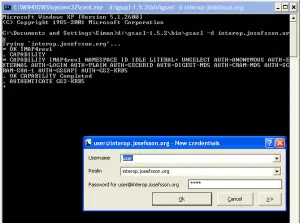
KRB5 refers to version 5 of the Kerberos protocol. Kerberos is a network authentication protocol developed by the MIT or Massachusetts Institute of Technology. With KRB5 or Kerberos version 5 implementation, client-server platforms or applications can be made secure through secret-key encryption technology. In order for access to be allowed to a particular server, strong cryptography is imposed on a particular client computer before any communication is allowed by Kerberos. The client side must basically prove its worth and identity before it can communicate with the network server across the possible dangers of the common internet gateway. The best thing about KRB5 implementation is that communication between the client and server sides of the network may be made private and secure. Users of the protocol basically need not worry on privacy or have data integrity concerns.
KRB5 or Kerberos authentication is built on using symmetric key guidelines on cryptography. Through this system, so-called “tickets” may be exchanged between the client and server sides of the network over a standard and non-secure connection. Without these communication tickets, no communication will be allowed by the Kerberos network authentication protocol. These tickets are basically what identify the client computers when trying to access the server computers. These same tickets or symmetric keys are also used by the servers to identify themselves and provide mutual authentication with the client side. With both sides of the network identifying each other, communication is said to be more tight, private and secure.
Based on its predecessor or previous authentication version, Kerberos version 5 or KRB5 basically improved on the former’s security features. The identity authentication part is made stronger to ensure that all client computers that contact the server actually assume the identity that they claim to have. Once the identification process is done, all client or user information and credentials are packaged into a communication ticket to further improve security and privacy. This data ticket will then be encrypted as it is transferred across the network.










Leave a Reply